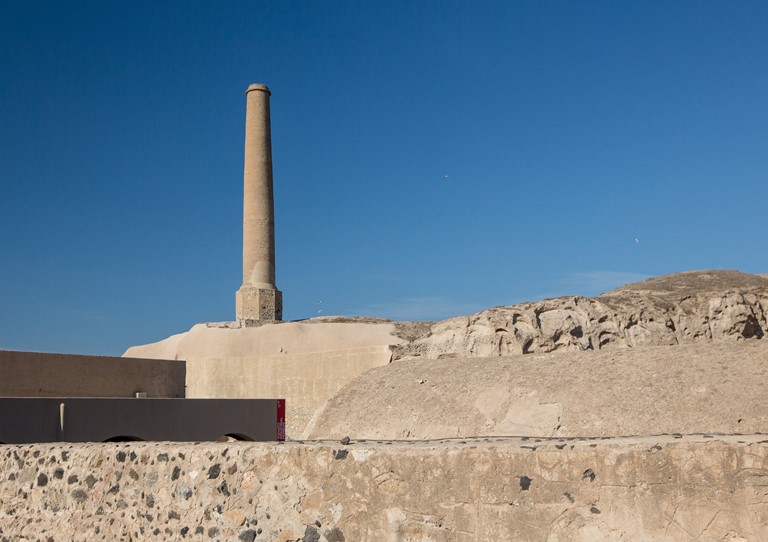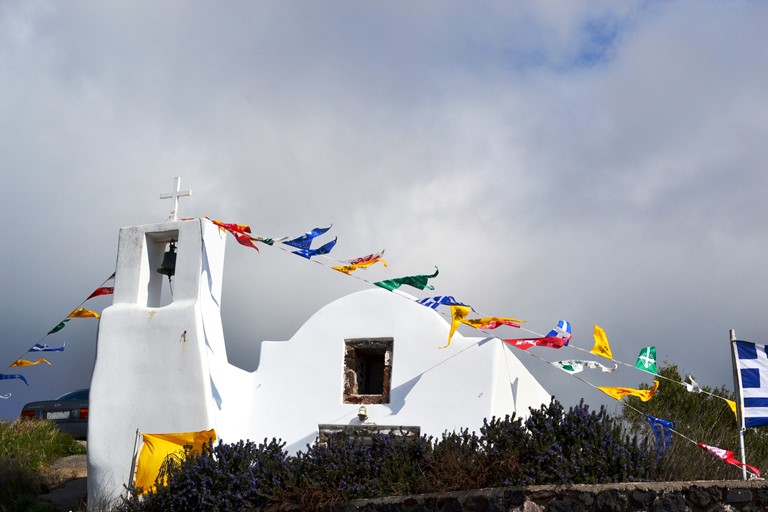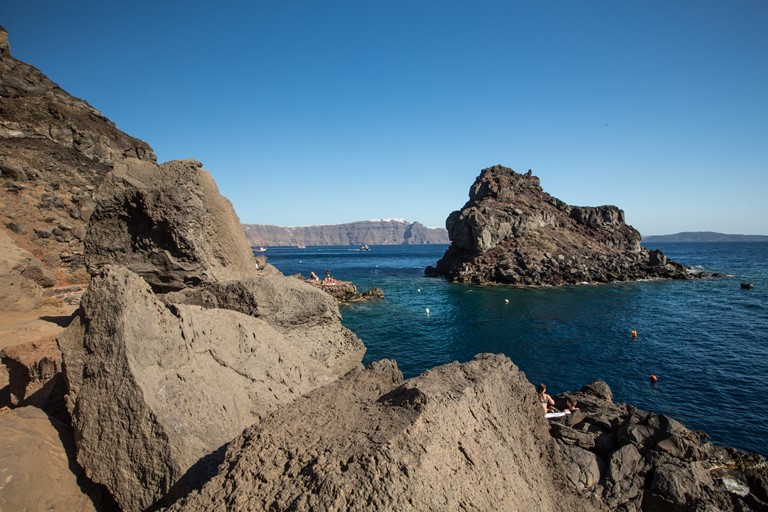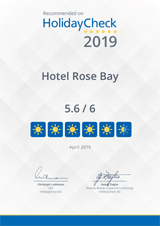Emboreio’s Castle settlement is similar to the one we previously visited in Pyrgos. Under Venetian rule, Santorini actually had five Castles, a word used to describe a settlement built in a way such that it protected its inhabitants from pirates. Santorini’s Castles had one single entrance and you will feel a distinct vibe when you cross that arched passage that takes you inside what used to be a fortress built of houses. What makes Emboreio’s Castle special is its architecture. The roads are so narrow that they feel like the corridors of a house. The whole village is built with volcanic soil and the buildings’ walls look soft and flexible. The entrances to most houses, which are all very closely nested together, is high above the ground and a set of narrow, vertical steps leads to each one of them. Windows are small and it is hard to figure out what is going on behind the closed curtains. There is, however, one door that is usually open and a space that invites you inside to explore. As you walk Emboreio’s labyrinth, keep an eye out for Art Studio, where two artists display their work: paintings inspired by Santorini.
Emboreio Castle’s traditional kafeneio is the perfect final stop to your visit. The small number of tables makes this place very intimate and the fact that your order will be written with chalk on a handheld blackboard is an experience to remember.
You can also combine a visit to Emboreio with a swim or walk at Vlychada beach. Similar to the walls of Emboreio, Vlychada’s limestone rocks seem to have a life of their own. Sculpted by the wind and sea salt, they amaze visitors with their unusual shapes.


Almost everybody knows that Santorini’s unusual beauty is the result of a volcanic eruption but, once you are on the island, it is hard to tell where that volcano actually is. Santorini as we know it today, is the result of four volcanic eruptions the last of which occurred in 1620 BC. This final...
Read More

Saint Matrona’s festival takes place on October 20 in Finikia and is one of Santorini’s most popular panigiria, as these open air celebrations are called in Greece. Saint Matrona’s church is decorated with palm leaves on the eve of the celebration and the religious icon that depicts the saint is...
Read More

Santorini’s seabottom is a combination of “crystal clear waters and dramatically impressive underwater landscapes”, as Pierre Yves Cousteau put it. It was forty years ago that his father, oceanographer Jacques Cousteau, explored the depths of Santorini in search of the lost city of Atlantis. The...
Read More





